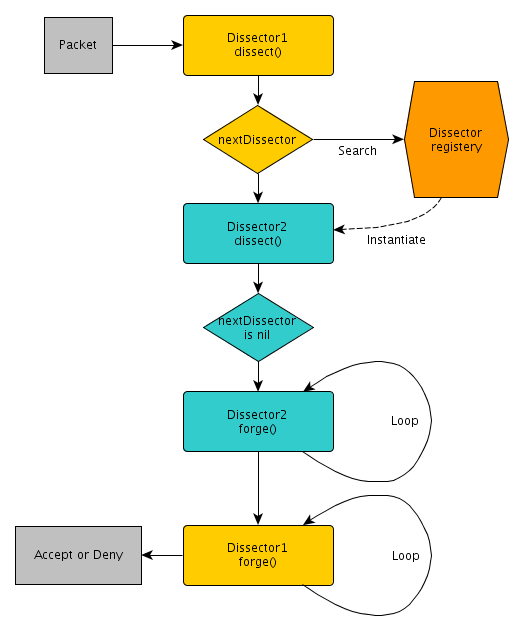2. Haka architecture¶
2.1. Dissectors¶
The configuration will define a list of dissector. Each dissector is described by:
- Name: unique dissector name
- Dissect function: dissector main function

See also
The dissector will give access to any fields in read/write mode. For example, once an IP packet is dissected, all fields are accessible by their name : IP.dst, IP.df flags, and so on.
2.2. Rules¶
Along with the dissector, the configuration can define rules to apply. Those rules are assigned to some hooks. A rule need the following fields:
- A hooks member that contains a array of hook string name. It will be used to install the rule on them.
- A rule.eval() function that is called to evaluate the rule.
- All fields defined from the dissector can be used from the rule.
2.3. Rule hooks¶
The hooks are the points where the user can install rules. When the system will reach a hook point, all the rules installed on it will be called. The order of the rule execution matches the declaration order.
A given dissector automatically defines two hooks:
- dissector_name-up: For instance, for the dissector ipv4, this hook is named ipv4-up.
- dissector_name-down.

It is also possible for a dissector to define custom hooks that matches some specific conditions. It is then responsible for calling the rules when needed.